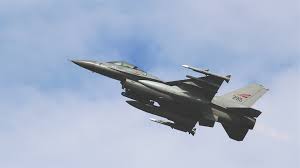
Military analysis indicates that the production of the J-20 stealth fighter jets by the People’s Liberation Army (PLA) of China is on the verge of surpassing, if not already exceeding, the 200-unit mark. This milestone represents a significant leap forward in China’s military capabilities, while concurrently posing a growing challenge to the United States’ defense posture.
The gap in the number of operational stealth aircraft between the Chinese and U.S. air forces has narrowed to fewer than 180 units. Factoring out the F-22 fleet, which faces operational limitations due to aging, the difference could further reduce to around 150 aircraft.
The PLA’s achievement is underscored by the impending completion of the new Chengdu Aircraft factory, which is expected to boost the J-20’s annual production rate beyond 100 units. This contrasts with the delayed deployment of the F-35 TR 3 and Block 4 upgrades, leading to a gradual decrease in the U.S. Air Force’s F-35A deliveries. Consequently, the annual increase in the U.S. F-35A fleet is projected to stabilize between 30 to 50 aircraft in the near term.
This trend suggests that the disparity in stealth fighter numbers between the Chinese and U.S. air forces could diminish within the next two to three years.
The PLA’s J-16D fighter has attracted considerable attention for its potential to challenge the F-22. Analysts attribute this to the J-16D’s advanced electronic warfare capabilities, which, despite its lesser stealth characteristics compared to the J-20 and F-22, afford it comparable survivability in environments dense with radar surveillance. The strategic value of the J-16D’s electronic warfare prowess is indeed noteworthy.
Radar systems are designed to emit electromagnetic signals and capture the reflections from targets, allowing for the spatial plotting of the target’s position on the radar display. Electronic warfare aircraft exploit this by analyzing the frequency and direction of incoming radar signals and counteracting with deceptive echoes, overwhelming the target radar with a barrage of false information.
This electronic countermeasure typically serves a dual purpose, tailored to the mission’s objectives. The primary method involves inundating the adversary’s radar with spurious echoes, effectively overloading and incapacitating it. Alternatively, it can create numerous fictitious target blips on the enemy’s radar, potentially leading to erroneous tactical decisions.
In the context of the J-16D and J-20 aircraft, active jamming is a key feature of the J-16D’s electronic warfare suite, which could potentially reveal its location due to the substantial signals it emits. Despite this, the J-16D presents a formidable challenge to the F-22 and F-35, with a win ratio slightly favoring the former. Against the F-35, which boasts advanced electronic systems, the J-16D’s disadvantage may be somewhat mitigated.
The PLA’s strategic approach to countering American stealth capabilities hinges on the J-20 as the primary asset, with the J-16D providing crucial support. This combination enhances China’s aerial combat effectiveness against the US Air Force, promising significant advantages in air-to-air engagements.




